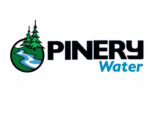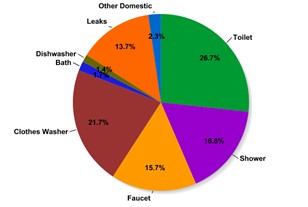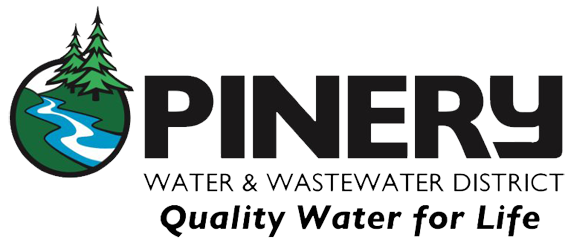[vc_row][vc_column][vc_column_text]
Here is where you will find answers to common questions. Click a question to see the answer. If you don’t see the answer to a question you have, please contact us or call our office during business hours at (303) 841-2797.
You can also find helpful information on our Articles & Information page.
[/vc_column_text][/vc_column][/vc_row][vc_row][vc_column][vc_toggle title=”How do I sign up for the Advanced Metering Program?”]How to Engage
The Pinery WWD is introducing EyeOnWater to the customers using three approaches.
- Submitting a Water Rate Adjustment request form:
There has been a new requirement added to this form. If the request meets district approval the customer will be required to pay all the necessary costs, fees and re-occurring fee to convert the meter and register for EyeOnWater.
- Voluntary Engagement:
A customer can willingly pay all the necessary costs, fees and re-occurring fee to convert the meter and register for EyeOnWater.
- Home Purchase:
Purchasing a new home in the Pinery or a home with the pre-existing EOW technology.
To view step-by-step EyeOnWater sign-up instructions click here[/vc_toggle][/vc_column][/vc_row][vc_row][vc_column][vc_toggle title=”What Are The Changes At Bingham Lake?” el_id=”1516825563611-1666e4e9-b164″]Zebra mussels are small barnacle-like mollusks with dark and light colored stripes. They smother aquatic organisms, such as crayfish and native clams and out compete for food and aquatic habitat. Zebra mussels damage equipment by attaching to boat motors or hard surfaces and clog water treatment facilities. Zebra and Quagga mussels were originally detected in Pueblo Reservoir and Lake Granby. The District’s Board of Directors has adopted a Resolution prohibiting all activities which might pose a threat of causing a Zebra and/or Quagga mussel infestation in Bingham Lake.
Effective September 2, 2008 boating of all types, use of float tubes, and wading in the lake (with or without waders) is prohibited. Fishing is still permitted from the shore and from the dock. The Board will continue to monitor the spread of the Mussels in the State and will modify these changes in the management of the Lake events unfold. Thank you in advance for your cooperation.[/vc_toggle][/vc_column][/vc_row][vc_row][vc_column][vc_toggle title=”Can I Visit the Facilities?”] The District would like to extend an invitation to visit facilities operated by the District for Water Treatment, Water Distribution, Wastewater Collection, Wastewater Treatment and Reclamation. Interested parties, individuals, schools, homeowner associations, etc., can contact our office at (303)841-2797 to set up tour dates or obtain additional information. District representatives are available to attend community gatherings for informational presentations.
The District would like to extend an invitation to visit facilities operated by the District for Water Treatment, Water Distribution, Wastewater Collection, Wastewater Treatment and Reclamation. Interested parties, individuals, schools, homeowner associations, etc., can contact our office at (303)841-2797 to set up tour dates or obtain additional information. District representatives are available to attend community gatherings for informational presentations.
Topics of tours or presentations can include:
- Current Water Treatment Methods
- Distribution System Operations & Maintenance
- Water Conservation Program
- Wastewater Treatment & Water Reclamation
- Wastewater Collection System
- Biosolids Production & Beneficial Reuse Program
[/vc_toggle][/vc_column][/vc_row][vc_row][vc_column][vc_toggle title=”How can I identify a District Employee in my neighborhood?”] To help you identify District employees when they are in your neighborhood or servicing an issue at your home, please note that our employees will be driving a District truck (clearly marked with the District logo) and wearing attire also sporting the District logo.
To help you identify District employees when they are in your neighborhood or servicing an issue at your home, please note that our employees will be driving a District truck (clearly marked with the District logo) and wearing attire also sporting the District logo.
If you’re ever in doubt, please call the District office (303)841-2797.[/vc_toggle][/vc_column][/vc_row][vc_row][vc_column][vc_toggle title=”Why has my water pressure been reduced, or come to a complete halt?”]In the middle of the winter season and almost every year, the District receives calls from homeowners who have lost water service. The majority of frozen water lines actually occur inside the house. Water service lines are buried in the earth nearly 5’ down and rarely does the frost get that deep. However, if an outside pipe does freeze, it most often occurs in a sprinkler system that has not been properly winterized or in the water meter pit. Most water meters in the District are installed in a meter pit located outside, near your property line. The ground temperature at the bottom of the meter pit typically prevents the meter from freezing. Also, the meter cover is designed to insulate the meter from the surface temperature.
Back inside your home, the slightest chilly draft near plumbing lines is capable of freezing the water line. Home-owners are encouraged to check where their water service line enters the home and follow the piping. Small gaps in the exterior woodwork just above the top of the foundation or basement wall are the usual culprits. These gaps allow cold air from the outside to enter the room. If the basement is finished, then this cold air enters the wall. Properly insulating the water line from the cold air and caulking seams or holes near the piping greatly improves your chances of having uninterrupted water service in cold weather.
If you are away on vacation or not occupying your home during the winter, think about having someone check your home and running the water occasionally. You might also consider turning your water off while you are away – see the question below on master shutoff valves. It’s after the freeze that split or broken pipes thaw out and extensive damage to your home can occur.
In the event you have no water, please call the District at (303)841-2797, ext. 0 (after hours dial ext. 299 to connect to our answering service). A District Representative will come to your house and check to see if there is water to the meter. If they determine that water does flow through the meter, you may need to call a plumber or search out the problem on your own.[/vc_toggle][/vc_column][/vc_row][vc_row][vc_column][vc_toggle title=”Where is my Master Shutoff Valve?”]If a water pipe inside your house freezes and begins to leak, would you know what to do? Would your family? Such nightmares do happen, but damage can be minimized if you’re prepared. It’s a great idea to find and share with all members of your household the location of the master shutoff valve. The valve is usually located inside your home where your water line enters from the meter pit.
Why would you want to shut off this valve? If a pipe breaks inside your house, this valve will turn off all water entering your home. Think about marking it with a tag or paint it a bright color for quick reference. Being prepared and taking quick action could help save your home and family treasures. If you have difficulty finding it, please give us a call at (303) 841-2797 and we will try to assist you.[/vc_toggle][/vc_column][/vc_row][vc_row][vc_column][vc_toggle title=”Why is the District Flushing Good Water Down the Drain?”]Have you ever seen the “flushing” signs in your neighborhood and questioned what that is all about? Ever wondered why we’re sending gallons and gallons of water down the drain? Or, where that water is going?
 Over the winter, mineral deposits that occur naturally in the water build up inside the water main due to lower water usage. Every spring, the District “clears” the water mains that serve your home of such build-up by opening fire hydrants. The surge of water delivered out the hydrant is able to pick up the deposits and remove them from the water supply. While this may seem wasteful, our high water quality is maintained: taste is improved, odor is reduced and color is clearer. At the same time, fire hydrants are checked for operation and visibility to ensure that should there be a fire, they are operational and easy to find.
Over the winter, mineral deposits that occur naturally in the water build up inside the water main due to lower water usage. Every spring, the District “clears” the water mains that serve your home of such build-up by opening fire hydrants. The surge of water delivered out the hydrant is able to pick up the deposits and remove them from the water supply. While this may seem wasteful, our high water quality is maintained: taste is improved, odor is reduced and color is clearer. At the same time, fire hydrants are checked for operation and visibility to ensure that should there be a fire, they are operational and easy to find.
It takes nearly two months to complete the flushing cycle throughout the District! The Staff begins flushing the water in late March; watch for signs in your neighborhood.
If you have any questions, just give us a call.[/vc_toggle][/vc_column][/vc_row][vc_row][vc_column][vc_toggle title=”How “Hard” is my water? What is Hardness?”]Hardness in drinking water is caused primarily by the presence of two minerals; calcium and magnesium. “Soft” water on the other hand has very little amounts of these minerals. A good way to think about it is that making a lather or soapsuds is “hard” with hard water and making a good lather with soft water is easy.
The average hardness of the water supplied by the Pinery Water & Wastewater District is 210ppm (mg/L). This is considered moderately hard and is to be expected, given the geographic location of the Pinery area. Hardness will not harm you and your District currently does not treat for hardness.
Should you consider a home water treatment system? This is a personal decision. These systems are not needed to make the water “safe”. In fact, if not properly maintained, the systems actually may cause water quality problems. However, some people do not like hard water. So if you decide to install a treatment system, think about where to install it inside your house. These systems can be installed on you faucet(s), under your sink, just on your hot water heater or at the point of entry into the house. A water softener can help eliminate hard water spots on your dishes and glasses. Most softeners are regenerated with salt. After the salt is used, it goes down the drain and into the environment. To prevent unnecessary regenerations, set your softener to regenerate after a selected amount of water has passed through it, rather then using a timer. This prevents wasting salt and water by regenerating too soon, producing a cost savings to you.[/vc_toggle][/vc_column][/vc_row][vc_row][vc_column][vc_toggle title=”What are Rain & Moisture Sensors?”]Rain and moisture sensors are a great water conservation tool for those with large lawns or landscaped areas. Moisture sensors are installed in the ground and measure the moisture received. When the desired amount of moisture in the soil has been reached the sensor shuts off the sprinkler system until moisture is again needed.
The most commonly used moisture sensor is the Mini-Click II. Rain sensors, on the other hand, are mounted on the side of a house or building in a place exposed to direct rainfall. These sensors conserve water by suspending irrigation during and after a rainfall.
The Rain Switch by TORO is the sensor most widely used by professionals. Sensors can be purchased at most large hardware stores. The moisture sensor retails for about $45.00 and the rain sensor for about $35.00. If you choose to have a professional install your sensor, expect to pay around $85.00 for installation.[/vc_toggle][/vc_column][/vc_row][vc_row][vc_column][vc_toggle title=”Where Does Our Water Get Used?”] The American Water Works Association Research Foundation recently completed a study of where water gets used. They did a detailed analysis of 1,188 homes in 12 different cities. The results of this study appear to match the experience of our District. Here is what they found:
The American Water Works Association Research Foundation recently completed a study of where water gets used. They did a detailed analysis of 1,188 homes in 12 different cities. The results of this study appear to match the experience of our District. Here is what they found:
Inside water use:
- Toilets 26.7%
- Clothes Washers 21.7%
- Showers 16.8%
- Faucets 15.7%
- Leaks 13.7%
- Other 2.3%
- Baths 1.7%
- Dishwashers 1.4%
Outside Water use:
- Homes with in-ground sprinkler systems use 35% more water than homes without a sprinkler system.
- Homes with an automatic timer on their sprinkler system use 47% more water.
- Homes with a garden use 30% more water outdoors than homes without a garden.
[/vc_toggle][/vc_column][/vc_row][vc_row][vc_column][vc_toggle title=”Why does my water appear milky or cloudy?”] A temporary milky or cloudy appearance is usually caused by air bubbles in the water, which poses no risk to your health. If the water is allowed to sit, the air will dissipate and the water will clear.
A temporary milky or cloudy appearance is usually caused by air bubbles in the water, which poses no risk to your health. If the water is allowed to sit, the air will dissipate and the water will clear.
If the cloudiness does not disappear, please flush your plumbing at the highest spot in the house for five minutes. If the issue persists, please contact the District so that we may investigate.
What causes spots/film on my dishes/glasses? Spots or film on your dishes are typically caused by:
Variances in water temperature
Dish detergent
Hard water
Minerals that remain after the water has evaporated
Spots may be reduced through use of a dishwasher rinse agent.[/vc_toggle][/vc_column][/vc_row][vc_row][vc_column][vc_toggle title=”Should I buy a water softener?”]The hardness of water varies with the District’s water sources. The choice to buy a softener is really a personal one since hard water is not harmful to your health. It is important to know that water softeners typically increase the sodium content of the water, a factor that should be considered by people on a low-sodium diet.
If you choose to install a softener, the District’s average “hardness” is 210 ppm (mg/L) or 11.5 grains per gallon. This information will be helpful in setting up your softener.
[/vc_toggle][/vc_column][/vc_row][vc_row][vc_column][vc_toggle title=”Should I buy a home filtration unit?”]According to the United States Environmental Protection Agency, home treatment units are rarely necessary for health reasons. Most often, water treatment units are used to remove substances that affect the aesthetic qualities of the water.
If you do choose to install a home treatment unit, it is important to follow the manufacturer’s maintenance instructions because improperly maintained units can actually cause water quality problems. Additional information is available here.[/vc_toggle][/vc_column][/vc_row][vc_row][vc_column][vc_toggle title=”What should I do if my coffee has an oily appearance?”]We recommend cleaning your coffee maker with vinegar and water, or as directed by the manufacturer.[/vc_toggle][/vc_column][/vc_row][vc_row][vc_column][vc_toggle title=”What causes the hot water to have an odor?”]The most common culprit of odor in hot water is the water heater. If your cold water smells fine, check your water heater to ensure that the temperature setting is correct. Water heaters need to be maintained and flushed on a regular basis (see manufacturer’s instructions).
Please contact us if an odor is present in both the hot and cold water.[/vc_toggle][/vc_column][/vc_row][vc_row][vc_column][vc_toggle title=”Why does the taste of my water change throughout the year?”]Water sources change at certain times of the year due to the availability of our supplies (deep wells versus alluvial sources). Surface water, or water that comes from sources like Cherry Creek, tend to taste slightly different than water pumped from the deep underground aquifers.
If your water tastes “stale”, it’s likely because it’s been sitting in your service line for a period of time (or perhaps your ice cubes have become stale). Run your faucet for about five minutes to flush out your house pipes. If this does not resolve your issue, please contact us for assistance.[/vc_toggle][/vc_column][/vc_row][vc_row][vc_column][vc_toggle title=”What causes water to be discolored?”]Color in water is usually caused by naturally occurring organic matter, minerals or mineral build-up in the pipes. The District flushes our system regularly to clean mineral build-up and other sediment from the pipes.
However, if you receive discolored water, let your faucets run until the water is clear. Such substances typically do not pose a health hazard; however, we ask that you please report any instances of discolored water so that we may investigate.[/vc_toggle][/vc_column][/vc_row][vc_row][vc_column][vc_toggle title=”Is bottled water higher quality than tap water?”] Tap water and bottled water providers must meet the same water quality standards. Surprisingly, tap water providers are required to conduct more frequent water quality testing and reporting than bottled water providers.
Tap water and bottled water providers must meet the same water quality standards. Surprisingly, tap water providers are required to conduct more frequent water quality testing and reporting than bottled water providers.
Some consumers prefer the taste of bottled water, and some choose bottled water because they have special health needs. But, tap water is a much better deal at costs of 1,000 times less than bottled water… and some bottled waters actually originate from a municipal supply!
Click here for more information.[/vc_toggle][/vc_column][/vc_row][vc_row][vc_column][vc_toggle title=”Did you know the biggest water waster in your house can be your toilet!?”]Whether you have a constant or intermittent leak, OR you have an old style toilet that uses multiple gallons with each flush, you might just want to check this out!
Sometimes all you need to do is replace the leaky flapper, but sometimes it might be a good idea to replace your old toilet with a more water efficient model.
Douglas County Water Resources Authority presents the following two-minute videos to assist with replacing or repairing your toilet. They take the mystery out of exactly how to do it!
Save water, save money. It’s easy! See the videos below.
Toilet Replacement
[youtube id=”QawfQldnkUY” align=”center” mode=”thumbnail” autoplay=”yes”]
Replacing the flapper in your toilet
[youtube id=”diJ3xuZJTXk” align=”center” mode=”thumbnail” autoplay=”yes”]
Click here for more information on WaterSense labeled toilets
Reduce Toilet Water Waste – Serious Conservation, Serious Results[/vc_toggle][/vc_column][/vc_row][vc_row][vc_column][vc_toggle title=”How to Read Your Water Bill”]Bill Info Sheet[/vc_toggle][/vc_column][/vc_row][vc_row][vc_column][vc_toggle title=”How Meters Are Made”]How Water Meters Are Made[/vc_toggle][/vc_column][/vc_row]
